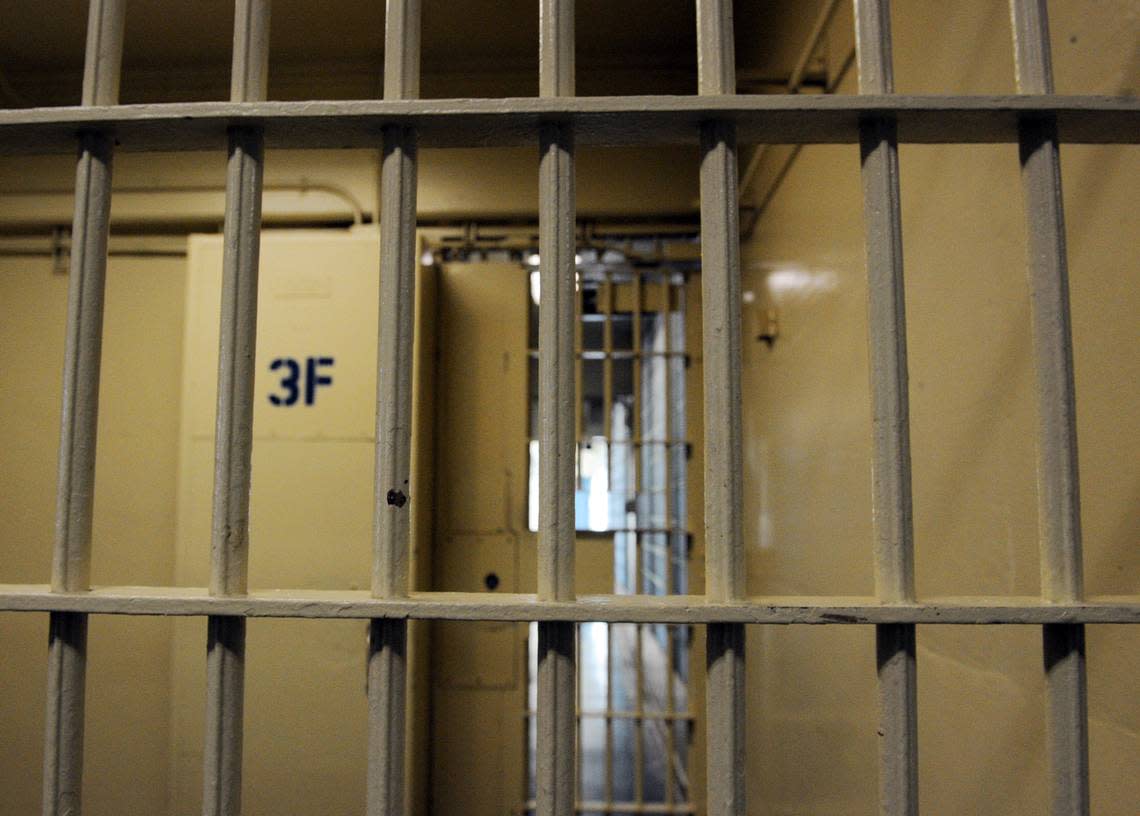Pennsylvania prison overtime costs climb $40M over two years as staffing issues continue

Though vacancies in the state prison system are dropping, their costs are large — driving a $230 million increase in the budget request.
The Department of Corrections’ budget request in Gov. Josh Shapiro’s proposal is $3.2 billion, a $106 million jump from what was requested by the department in the fall.
The change, DOC Secretary Laurel Harry said during the House Appropriations Committee hearing on Friday, is driven by officer vacancies and the financial strain created by overtime.
“At that particular time, we had the highest number of vacancies we’ve ever had. It was 10.5%, about 930 vacancies. It’s very difficult to predict overtime trends,” Harry said. “Our recruitment and retention team, we were just starting to finalize the selections for that team … they didn’t start hitting the ground running until the beginning of the year.”
Staffing issues are starting to lessen, though the department still has hundreds of empty slots.
“Our vacancy rate now fluctuates between 7% and 7.5% — 625-650 corrections officer vacancies,” Harry said.
The problem isn’t new — Corrections has struggled in recent years with a labor shortage. During last year’s budget hearings, Harry estimated they were short by 750 workers. A competitive labor market, where other jobs paid better and had less stress, made recruitment tough.
“We’re focusing on recruitment, but we need to do more for retention,” Harry said.
The department has invested in mental health and staff wellness initiatives, and making the job less onerous. Harry noted that mandatory overtime rates dropped from 25% to 12.8% in the last year, closer to pre-COVID levels of 10%.
“We don’t want folks to be burnt out, it creates an unhealthy environment,” Harry said.
It adds pressure to the budget, too. For the last fiscal year, the department budgeted $128 million for overtime costs. For the current year, they project $142 million. For next fiscal year, they expect $167 million in overtime costs.
An investigation of the labor problem may be on the table: When Rep. Tim Brennan, D-Doylestown, asked if the department would support an audit or review of rising costs due to overtime and retention problems, Harry said “absolutely,” and noted some of those problems can take three or four years to clear out.
Lifting restrictions on hiring could materialize in the General Assembly.
Rep. Clint Owlett, R-Wellsboro, has proposed a bill, HB1968, that gained bipartisan support that would allow the department to hire out-of-state workers. Though the department has waivers to hire out-of-state workers now, it’s a temporary fix.
“This blew my mind because it doesn’t make sense in the private sector at all, so it really left me scratching my head why this is still something that is happening in our correctional facilities,” Owlett said.
Another rising cost, thanks to the end of federal grants, is medication-assisted treatment for prisoners dealing with drug addiction.
The budget request includes a $30 million increase for MAT — the state previously didn’t fund it because federal funding took care of it.
“Our program simply exceeded the funding we got,” Harry said. “We had to request an additional $10.5 million and of course we’re not seeing that funding. I am going to Capitol Hill in a couple months and MAT will be on my list to talk to our Pennsylvania lawmakers (about).”
Statewide, about 1,800 inmates use medication-assisted treatment, Harry said.
Beyond MAT, the state prison system spends about $41 million on medication for almost 11,000 inmates over 50 years old.
“The reality is people who come into our system at age 50, they’re not going to the doctor like we are, they aren’t taking care of their bodies like an average individual would,” Harry said. “The people that are coming in — drug use, obviously, places significant wear and tear on the body, mental health issues, running the streets, not getting eight hours of sleep.”
Adding to problems within the prison system: stopping illicit drugs from reaching prisoners.
Rep. Jim Struzzi, R-Indiana, noted that the prison in Pine Grove is reporting more drugs getting in through legal mail (as opposed to the normal mail flow, which gets scanned for illicit material).
“We had about 34 significant finds in our legal mail,” Harry said. “We just had a significant find — 7 pages soaked in fentanyl.”
She said it’s on officials’ radar and they try to mitigate it through their processing centers.
She also emphasized that the department is improving on keeping inmates out of the system when they leave.
Recidivism rates, Harry said, are dropping, with the three-year recidivism rate being the lowest it’s been in 20 years, about 55%.
“We’re absolutely going in the right direction,” she said.
Harry previously advocated diversionary programs to drive down recidivism, as well as connecting released inmates to jobs. Experts have warned, however, that hiring managers don’t trust criminal justice programs within the prison system. Employers want to manage risk, and they don’t put much faith in the word of the criminal justice system.

